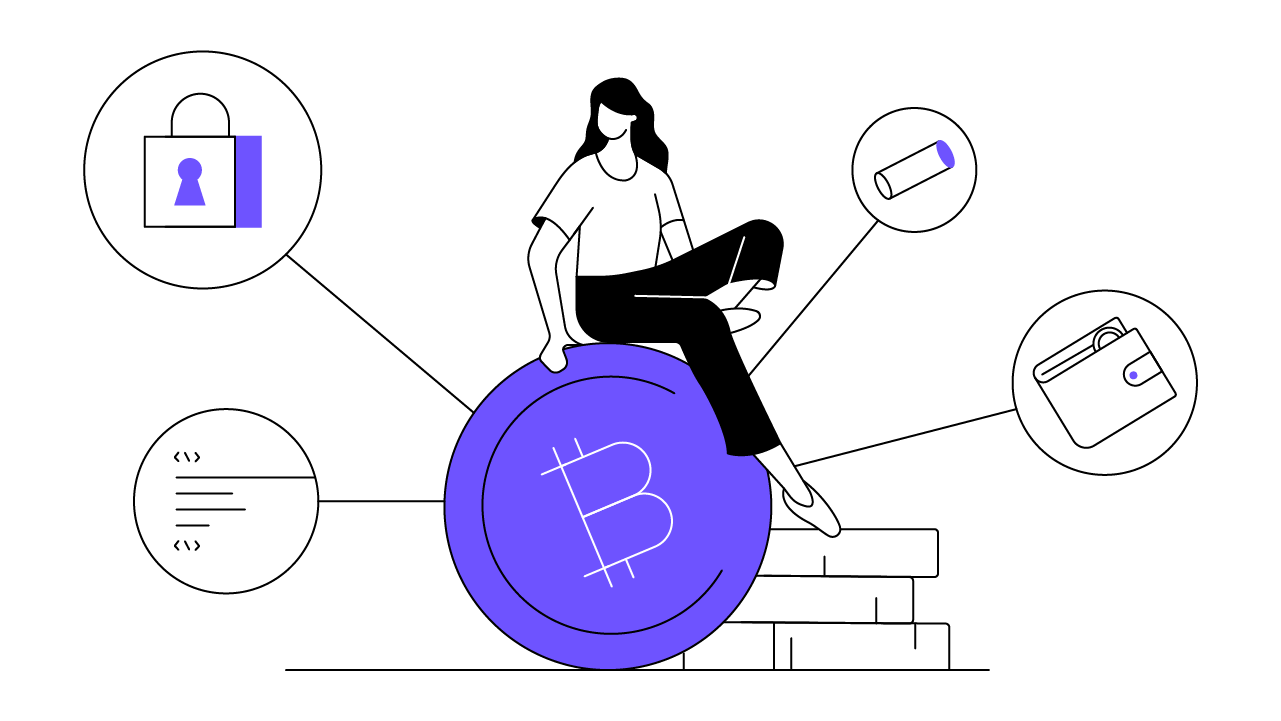Contents
Flexa: The Pure-Digital Payments Network
Using a Flexa-enabled app, anyone can instantly spend their digital assets in physical stores, with little risk of fraud — and no conversion fees.
By Tyler Spalding, Co-Founder & CEO, Flexa
Updated October 23, 2023 • 3 min read

Summary
Flexa is a versatile digital payments platform that offers several key features. As a merchant-focused app, Flexa has point-of-sale (POS) hardware compatibility and is designed to reduce costs, settlement times, and fraud. Payments are collateralized by Flexa’s ERC-20 token Amp, which can be staked as collateral that receives additional Amp as a staking incentive. Flexa uses “flexcodes,” unique barcodes that are generated and scanned for each transaction — enhancing security and consumer privacy. Accepted all over North America, Flexa aims to scale globally and integrate with numerous apps and payment options.
Flexa: Digital Payments
Flexa is the New York City–based financial technology (FinTech) company building the future of payments by solving the problems of friction and high payment costs for both merchants and consumers. For merchants, Flexa offers a variety of payment integrations and plug-ins to enable digital asset acceptance using existing point-of-sale (POS) hardware and software. Flexa offers app developers a drop-in software development kit (SDK) that can seamlessly unlock the value held in everything from digital wallets to loyalty apps — and beyond. For consumers, Flexa supports dozens of digital currencies — including cryptocurrencies, tokens, and digital dollars — for payment at thousands of stores throughout the United States and Canada — including Nordstrom, GameStop, Lowe’s, and Petco. Flexa has a mission of eventually enabling digital asset payments for any app, using any currency, at any store around the world.
How the Flexa App Works
When it’s time to make a purchase, your app generates a unique barcode called a “flexcode,” which participating retailers can scan to authorize and guarantee your transaction instantly. Flexa then pays merchants in either convertible virtual currency or their fiat currency of choice. Meanwhile, Flexa’s Spend SDK deducts the equivalent amount of crypto (e.g., bitcoin or ether) from your digital wallet within the app.
Flexa’s instant payment authorizations are made possible via Amp — the network’s native token — which was co-developed by Flexa and ConsenSys. As a fixed-supply, Ethereum-based ERC-20-compatible token, Amp works as crowdsourced collateral to completely decentralize payment risk, rewarding those who provide collateral with even more Amp tokens for every successful payment transaction. Anyone can stake Amp toward apps on the Flexa crypto network, and any Amp tokens staked can be locked in real-time to secure payment transactions while they await confirmation. In this way, Flexa can immediately guarantee payouts in any currency and directly extend the benefits of Distributed Ledger Technology (DLT) to merchant–consumer payment interactions.
Flexa: Crypto Adoption IRL
The Flexa model benefits both sides of a transaction. For crypto holders, Flexa brings digital assets to the real world, further establishing the credentials of cryptocurrency as money and unlocking value in the form of straightforward tender for goods and services. For merchants, the many advantages of Flexa include reduced costs, faster settlement, elimination of fraud, and access to the growing crypto market.
In the United States, around 86% of retail payments happen offline in physical stores. Capturing significant market share for cryptocurrencies among those payment transactions has been the key to mainstream adoption. However, most attempts at enabling retail digital payments have created challenging user experiences and ignore myriad merchant requirements. Along with growing public acceptance of digital assets as currency, there are a few key implementations that make Flexa the most promising approach for successfully integrating digital currencies with physical retailers.
First, Flexa is an entirely merchant-focused payments platform. Flexa incorporates familiar technologies such as backwards-compatible barcodes, ISO 8583 messaging, and closed-loop payment rails, while abstracting away the regulatory difficulties of cryptocurrency handling — effectively eliminating custom IT work and compliance obligations as hurdles to crypto payments adoption. Flexa’s wide variety of plug-ins and integrations often remove several of the traditionally entrenched middlemen in a payment transaction, drastically reducing the cost of acceptance while making payments faster than ever before.
Second, Flexa approaches payment fraud from a completely new perspective. Global fraud losses from payment card transactions could surpass $12 billion USD in 2021 because of lost or stolen cards, counterfeiting, and loss during card-not-present transactions such as online purchases. Flexa’s proprietary flexcodes are unique to each purchase, enhancing security while maintaining complete user privacy. Since distributed networks are used to validate transactions alongside a novel approach to decentralized payment collateralization, traditional types of payment fraud are simply no longer possible.
Can Flexa’s Crypto and Digital Payments App Scale?
Flexa has seen remarkable growth over the past several years, and has emerged as a leading digital payments platform. Flexa’s digital asset-to-fiat bridge is something that many in the blockchain industry have envisioned as key to the technology’s real use and success. On the Flexa crypto network, payments are made quickly, securely, and with the lowest fees, finally providing merchants with a meaningful, usable, and valuable alternative to traditional payment networks. Where we may have once dreamed about using cryptocurrency to buy an ice cream cone or the latest edition of Grand Theft Auto, Flexa is making that vision a reality — and opening up a whole new world of utility for the asset class.
Cryptopedia does not guarantee the reliability of the Site content and shall not be held liable for any errors, omissions, or inaccuracies. The opinions and views expressed in any Cryptopedia article are solely those of the author(s) and do not reflect the opinions of Gemini or its management. The information provided on the Site is for informational purposes only, and it does not constitute an endorsement of any of the products and services discussed or investment, financial, or trading advice. A qualified professional should be consulted prior to making financial decisions. Please visit our Cryptopedia Site Policy to learn more.

Author
Tyler Spalding
Co-Founder & CEO, Flexa
Tyler Spalding is co-founder and CEO at Flexa, a cryptocurrency payments network making real-world payments more efficient, accessible, and affordable for everyone. Tyler has been founding and investing in various blockchain projects since 2011. He was previously the CTO of Raise, co-founder and CEO of Tastebud Technologies, and an engineering lead with the United Space Alliance, US Air Force, and NASA’s Space Shuttle Program. He holds two Masters degrees from MIT and UIUC.
Is this article helpful?


